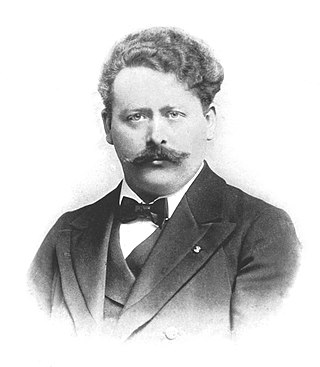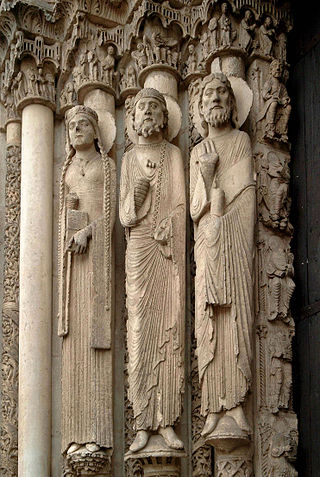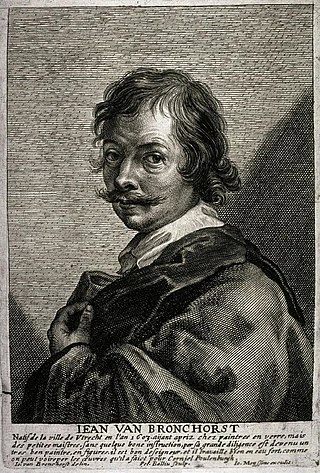
Utrecht is the fourth-largest city of the Netherlands, as well as the capital and the most populous city of the province of Utrecht. The municipality of Utrecht is located in the eastern part of the Randstad conurbation, in the very centre of mainland Netherlands, and includes Haarzuilens, Vleuten and De Meern. It has a population of 361,699 as of December 2021.

Gouda is a city and municipality in the west of the Netherlands, between Rotterdam and Utrecht, in the province of South Holland. Gouda has a population of 75,000 and is famous for its Gouda cheese, stroopwafels, many grachten, smoking pipes, and its 15th-century city hall. Its array of historic churches and other buildings makes it a very popular day-trip destination.

Stained glass is colored glass as a material or works created from it. Although, it is traditionally made in flat panels and used as windows, the creations of modern stained glass artists also include three-dimensional structures and sculpture. Modern vernacular usage has often extended the term "stained glass" to include domestic lead light and objets d'art created from foil glasswork exemplified in the famous lamps of Louis Comfort Tiffany.

Joseph Wilhelm Mengelberg was a Dutch conductor, famous for his performances of Beethoven, Brahms, Mahler and Strauss with the Concertgebouw Orchestra in Amsterdam. He is widely regarded as one of the greatest symphonic conductors of the 20th century.

Gothic art was a style of medieval art that developed in Northern France out of Romanesque art in the 12th century, led by the concurrent development of Gothic architecture. It spread to all of Western Europe, and much of Northern, Southern and Central Europe, never quite effacing more classical styles in Italy. In the late 14th century, the sophisticated court style of International Gothic developed, which continued to evolve until the late 15th century. In many areas, especially Germany, Late Gothic art continued well into the 16th century, before being subsumed into Renaissance art. Primary media in the Gothic period included sculpture, panel painting, stained glass, fresco and illuminated manuscripts. The easily recognisable shifts in architecture from Romanesque to Gothic, and Gothic to Renaissance styles, are typically used to define the periods in art in all media, although in many ways figurative art developed at a different pace.

The Cathedral of St. Michael and St. Gudula, usually shortened to the Cathedral of St. Gudula or St. Gudula by locals, is a medieval Catholic cathedral in central Brussels, Belgium. It is dedicated to Saint Michael and Saint Gudula, the patron saints of the City of Brussels, and is considered to be one of the finest examples of Brabantine Gothic architecture.

Mgr. Andreas Ignatius Schaepman was Archbishop of Utrecht from 1868 to 1882 and President of the Great Seminary of Rijsenburg.

St. Anne's Museum Quarter was previously an Augustinian nunnery, St. Anne's Priory. Since 1915 it has housed St. Anne's Museum, one of Lübeck's museums of art and cultural history containing Germany's largest collection of medieval sculpture and altar-pieces, including the famous altars by Hans Memling, Bernt Notke, Hermen Rode, Jacob van Utrecht and Benedikt Dreyer.

Saint Bernulf or Bernold of Utrecht was Bishop of Utrecht (1026/27–1054).

De Krijtberg Kerk is a Roman Catholic church in Amsterdam, located at the Singel. The church was designed by Alfred Tepe and was opened in 1883. The exuberant interior was made by Friedrich Wilhelm Mengelberg.

Mengelberg is a surname. Notable people with the surname include:

Jan Gerritsz van Bronckhorst was a Dutch Golden Age painter and engraver. He is considered today to be a minor member of the Utrecht Caravaggisti.

The Utrecht Guild of Saint Luke refers to two artist collectives in Utrecht (city); the old Catholic Zadelaarsgilde dating from the Middle Ages, as well as the newer Sint Lucas Gilde established in 1611. The first guild was for a number of trades that were connected to the art industry, though the smiths had their own guild called the "St. Eloyen" guild. The second collective was founded for visual artists after the Protestant Reformation. The Zadelaarsgilde fell under the patron saint Luke the Evangelist and the St. Eloyen guild fell under Saint Eligius.

Friedrich Wilhelm Mengelberg (1837–1919) was a German-Dutch sculptor, architect of church interiors, and art collector. His work promoted the Gothic Revival architectural-style in churches throughout Germany and the Netherlands. The Mengelberg family has a long history of various artists and professionals.

The Cathedral of St. Brendan, Loughrea, is the cathedral church of the Roman Catholic Diocese of Clonfert. Though designed in neo-gothic style, it arguably houses the most extensive collection of arts and crafts and Celtic Revival artifacts of any single building in Ireland. Its most noteworthy feature is the extensive collection of stained glass windows by the Dublin-based An Túr Gloine studio. There are also twenty-four embroidered banners, mostly depicting Irish saints as well as vestments by the Dun Emer Guild. Sculptors represented are John Hughes and Michael Shortall, and the architect William Alphonsus Scott also contributed designs for metalwork and woodwork. The foundation stone was laid on 10 October 1897 and the structure was completed in 1902; most of the interior features date from the first decade on the twentieth century with the exception of the stained glass windows which continued to be commissioned up until the 1950s.

Arti et Amicitiae is a Dutch artist's society founded in 1839, and located on the Rokin in Amsterdam. The Society has played a key role in the Netherlands art scene and in particular in the Amsterdam art schools. It was and is to this day a hub for artists and art lovers in the city of Amsterdam. It is a private institution which supports artists, maintains social networks and offers a pension fund. In recent times it has been one of the venues for the 17th edition of the Sonic Acts Festival.

St Patrick's Church is a heritage-listed Roman Catholic church at 58 Morgan Street, Fortitude Valley, City of Brisbane, Queensland, Australia. It was designed by Andrea Giovanni Stombuco and built from 1880 to 1882 by John Arthur Manis O'Keefe. It was added to the Queensland Heritage Register on 21 October 1992.

St Willibrord's Church, Utrecht, is a Roman Catholic church operated by the traditionalist Society of Saint Pius X (SSPX) and dedicated to Saint Willibrord. It is at Minrebroederstraat 21, Utrecht, in the Netherlands and has been designated a rijksmonument since 1976. It is currently owned by the Sint Willibrordus Stichting, which was founded by father Winand Kotte A.A. The church is near the Dom Church in the historical centre of Utrecht. It is considered a hidden treasure in the city. It is a fine example of Dutch gothic revival. Built in the nineteenth century, the interior was finished towards the end of that century. The church has a well known organ built by Maarschalkerweerd.
Thomas Erat Harrison (1858–1917) was an English artist who made sculptures, medals, paintings, and stained glass.

Joep Nicolas was a Dutch-born French ecclesiastical artist specializing in stained glass and sculpture. He was also a muralist, book illustrator, cartoonist, costume designer, and portrait painter.




















